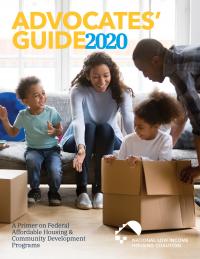HUD’s Office of Public and Indian Housing (PIH) Implements $50 Million Voucher Mobility Demonstration
Jul 20, 2020
HUD’s Office of Public and Indian Housing (PIH) published a notice in the Federal Register on July 15 implementing the Housing Choice Voucher (HCV) $50 million mobility demonstration authorized by Congress through the appropriations acts of 2019 and 2020. The purpose of the demonstration is to provide voucher assistance and voucher mobility-related services to families with children to encourage and assist them to move to areas with lower poverty and to expand their access to areas with greater opportunities such as better schools, full-service grocery stores, and access to public transportation. HUD will evaluate the extent to which mobility-related services help families with children move to opportunity areas and the length of time families remain in opportunity areas. Of the $50 million, up to $10 million is for new (“incremental”) vouchers and $40 million is for providing voucher mobility-related services. A separate appropriation provides an additional $3 million to evaluate the effectiveness of strategies pursued by the demonstration. The demonstration is effective until October 1, 2028.
HUD will test whether providing mobility-related services to families with children results in moves to opportunity areas, compared to families in a control group who are not offered mobility services. HUD describes a range of services, such as pre-move support, housing search assistance, landlord outreach and support, family financial assistance, landlord financial incentives, and post-move/subsequent-move support.
HUD will require public housing agencies (PHAs) to offer voucher payment standards high enough to help families use vouchers to rent a home in opportunity areas where market rents are higher. The same payment standard will be given to families in the control group as to families receiving mobility services and incremental vouchers. HUD will also ask PHAs to describe existing or proposed policies to promote housing mobility, such as extended voucher search times and portability policies.
The appropriations acts require that families eligible to participate voluntarily in the demonstration have at least one child under 18. Families that already have a voucher may participate, as well as families newly admitted from a PHA’s waiting list. Families will not be required to move to designated opportunity areas, nor will they be prohibited from moving to neighborhoods that are not opportunity areas. Families may end participation in mobility-related services at any time without affecting their vouchers, and families will not be terminated from the voucher program if they do not participate in mobility-related services.
The demonstration will have two different “treatment groups.” The first will receive comprehensive mobility-related services (CMRS). The second treatment group will receive a subset of the comprehensive housing mobility-related services, called selected mobility-related services (SMRS). The demonstration might suggest that using only individual elements of a subset is a more cost-effective approach to achieving mobility than using a broader comprehensive array of services. HUD anticipates adding SMRS in years three through six of the demonstration. Both CMRS and SMRS will be offered in years four through six.
The demonstration will have a control group recruited and enrolled concurrently with the treatment groups. The demonstration will recruit and enroll two different groups for both treatment and control: existing voucher holders and new admissions.
The demonstration includes four statutory categories of eligibility, referred to as “PHA sites”:
- PHA Partnerships consisting of agencies that, together, serve areas with high concentrations of voucher holders in poor, low-opportunity neighborhoods yet that have an adequate number of moderately priced rental units in high-opportunity areas.
- PHAs in planned or partial consortia of PHAs that include at least one PHA with a high-performing Family Self-Sufficiency (FSS) program.
- PHAs in planned or partial consortia of PHAs that serve jurisdictions in a single region, including one or more small PHAs and that will consolidate mobility-focused operations.
- A single PHA that serves areas with high concentrations of voucher holders in poor, low-opportunity neighborhoods yet that have an adequate number of moderately priced rental units in high-opportunity areas
HUD estimates that the $40 million for mobility-related services can assist at least 9,500 families. Each PHA site must have at least 1,950 families with children, enrolling at least 650 families for CMRS, at least 650 families for SMRS, and at least 650 families for the control group.
The statute authorized up to $10 million for new incremental vouchers, called MDVs, and HUD anticipates about 1,000 new MDVs will be made available and assigned to one of the two treatment groups. PHAs must agree to make some regular turnover vouchers available for new admissions. HUD estimates that there will be about 500 regular turnover vouchers assigned to the control group.
HUD is requiring PHAs to establish a waiting list preference for MDVs, any subsequent MDV turnovers, and regular turnover vouchers. The waiting list preference is for families with at least one child aged 13 and under that live in census tracts with a family poverty rate of 30% or higher.
HUD expects to make five to ten awards for MDVs and mobility-related services, ranging from $4 million to $10 million. HUD expects to announce awards under this demonstration in December 2020.
The Federal Register notice is at: https://bit.ly/3j53Vct
More information about the Housing Choice Voucher program is on page 4-1 of NLIHC’s 2020 Advocates’ Guide.
